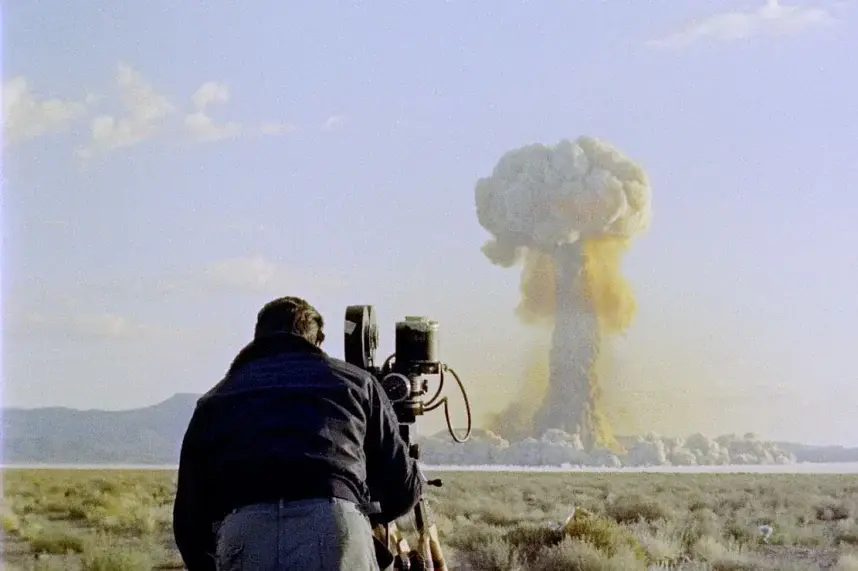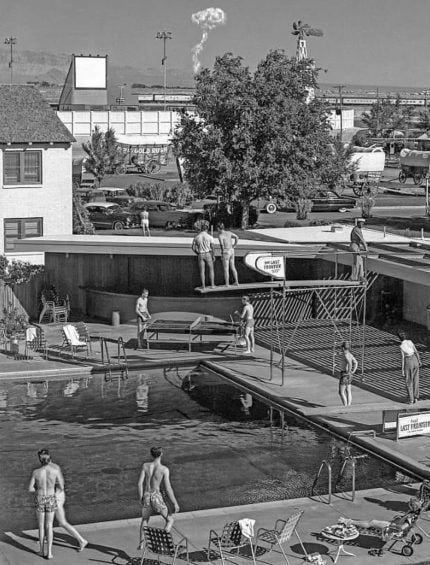Local Leaders Blast Resumption of Nuclear Weapons Testing Near Las Vegas
Posted on: October 30, 2025, 04:38h.
Last updated on: October 30, 2025, 08:43h.
When President Trump posted to Truth Social on Wednesday that he had ordered the Pentagon to resume nuclear testing “immediately,” Las Vegas government leaders clapped back.

They knew that the Nevada National Security Site (NNSS), 65 miles northwest of the Strip, is the only US location capable of conducting full-scale nuclear explosive tests. And, if expediency is the priority that the president claims it is, then building a new location will take too much time.
“Absolutely not,” Nevada Democratic US Rep. Dina Titus, D-Nevada, tweeted Wednesday. “I’ll be introducing legislation to put a stop to this.”
Trump says he ordered the resumption because other countries are testing nuclear weapons.
“We halted it many years ago, but with others doing testing, I think it is appropriate we do so also,” he told reporters aboard Air Force One.
This aligns with Project 2025, the document that has served as a blueprint for multiple Trump administration policies. It called for the US to “restore the nuclear infrastructure” and “readiness to test nuclear weapons at the Nevada National Security Site.”
“This directly contradicts the commitments I secured from Trump nominees — and the opinion of Administration officials who certify our nuclear stockpile — who’ve told me explosive nuclear testing would not happen & is unnecessary,” added US Sen. Jacky Rosen, D-Nevada, in her own tweet on Wednesday.
“I’ll fight to stop this,” she vowed.

Underground Zero
A January 1951 detonation was the first of 100 in the air over the 1,355 square-mile Nevada Proving Ground, which was carved out from the Nellis Air Force Gunnery and Bombing Range. (In 1955, its name was changed to the Nevada Test Site, followed by a 2010 name change to the NNSS.)
The aboveground tests — whose mushroom clouds were watched by tourists from Las Vegas bars and hotels during “atomic viewing parties” — ended with the signing of the Partial Test Ban Treaty in 1963.
Most people believe nuclear testing came to an end then. However, it continued until September 1992, when the Mirage was already three years old.
That 828 more nuclear tests were conducted at the Nevada Test Site wasn’t common knowledge because none of the them produced a mushroom cloud visible in Las Vegas — only the occasional ground rumble.
All those explosions left vast swaths of the Nevada site irradiated, with fallout exposure tied to elevated rates of cancer and other severe illnesses among workers and nearby residents.
They’re even implicated in the deaths of movie star John Wayne and the other cast and crew of the 1954 film “The Conqueror,” which filmed 137 miles downwind of the Nevada Proving Ground. (Of the 200 people who worked on it, 91 developed cancer.)
Tireless lobbying by self-proclaimed “downwinders” got Utah Sen. Orrin Hatch (R) to spearhead the 1990 passage of the Radiation Exposure Compensation Act. The $100 million compensation package offered $50,000 each to the families of all residents of Nevada, Utah, and Arizona able to link cancers and other diseases to their fallout exposure.
A congressional moratorium on all nuclear testing — driven by health, environmental and geopolitical concerns — was signed into law by President George H.W. Bush. The final test, codenamed Divider, was conducted on September 23, 1992.
Since then, the National Nuclear Security Administration has conducted only subcritical (non-exploding) nuclear weapons experiments on the site.
No comments yet